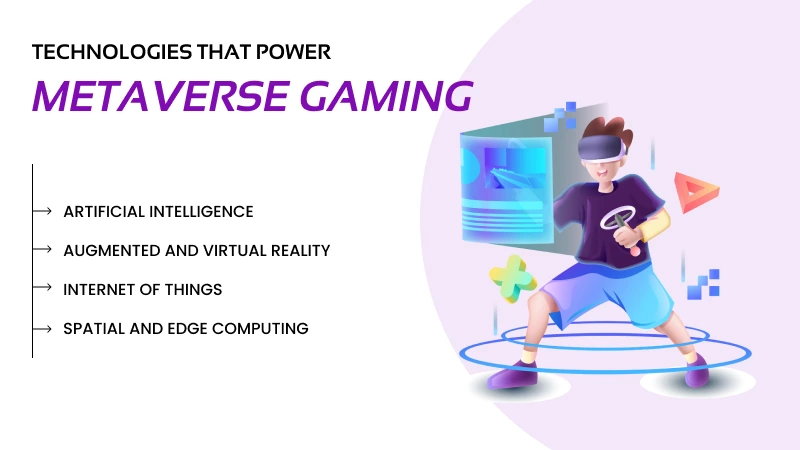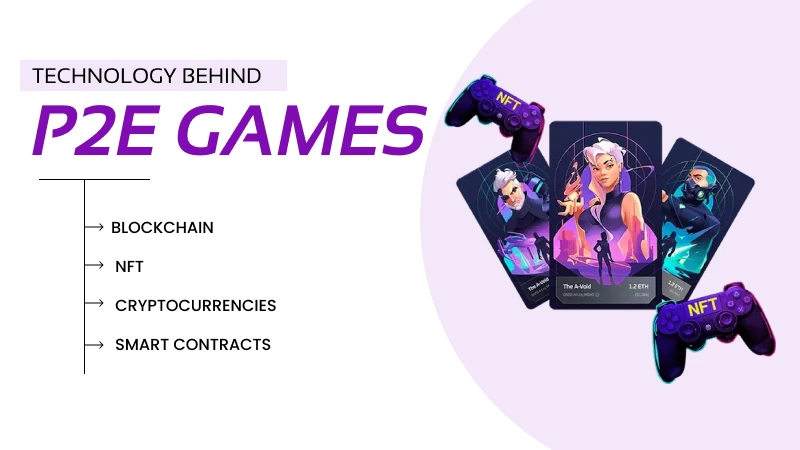Imagine you set into a virtual gaming world where you can fight demons, build cities, and interact with intangible objects! Now, what if you could earn by simply playing a game? That is where two of the most talked about trends in gaming come into the picture: Metaverse Games and Play-to-Earn (P2E) games.
At an instant, they might sound exactly the same because, after all, both live in digital space. But here is the catch: whilst they overlap in some areas, the two concepts are built on very different foundations.
So, what really separates a metaverse game from a play-to-earn game? And more importantly, which one is shaping the future of gaming? Let’s break it down.
What are Metaverse Games?
Metaverse is a decentralized platform that uses blockchain technology to let people and businesses make their own assets and experiences. In essence, an approach to creating a virtual world that is not controlled by any entity or organization and where players can interact, socialize, and engage in activities in a highly immersive and interconnected way.
With Metaverse games, programmers now have more freedom to create the kinds of games that they always wanted to, without having to obtain approvals from any corporate gatekeepers. Players also get real ownership over their in-game assets.
This has translated into the real world as well, with the Metaverse gaming market expected to reach a valuation of US$31.6 billion by the end of 2025.
Players can find themselves immersed in an alternative reality when playing games in the metaverse. Not only can you play games in the metaverse, but you can also meet other players like you and make connections with them.
Technologies that Power Metaverse Gaming
Multiple technologies work in conjunction and come together to help power these games, offering you an immersive virtual experience. Some of the key technologies that metaverse games use are:
Artificial Intelligence
Artificial Intelligence is like the foundation of metaverse gaming; it is the powerhouse behind dynamic experiences, intelligent adaptive environments, and personalized technologies like NLP (Natural Language Processing) and machine learning.
Augmented and virtual reality (AR and VR)
VR headsets create an entirely simulated digital world, providing a fully immersive experience, while AR overlays digital information and objects onto the user’s real-world environment. Coming together, these technologies form Extended Reality (XR), enabling a seamless flow between the physical reality and virtual reality.
Internet of Things
IoT bends the physical and digital space by allowing real-world data from connected devices to be used by software and translated into an immersion that is so realistic that you may think it’s a dream. The Internet of Things (IoT) is like the “nervous system” of the metaverse. It collects real-time data from sensors and wearables and sends it to the virtual world through digital twins.
Spatial and Edge Computing
Spatial computing uses technologies like augmented reality (AR) and mixed reality (MR) to put digital content on top of the real world. This lets users interact with virtual objects and environments as if they were really there.
What are Play-to-Earn Games
Play-to-Earn games are a recent advancement in gaming that leverages the power of blockchain technology to effortlessly integrate the benefits of cryptocurrencies with it. Now players have an opportunity to earn cryptocurrencies while simply enjoying their favorite game.
At the core of this shift lies the ability to play on the blockchain networks, where participants can earn tokens or non-fungible tokens (NFTs) as rewards for their gaming venture. This innovation diminishes the line between relaxation and monetary gains.
Players can sell their acquired accessories at high profits, and they can even build shops for gaming accessories in Decentraland. Many games allow players to sell their assets once they are done with playing, ensuring that players’ money is not poured down the drain.
The Technology Behind P2E Games
Listed below is a list of technologies that are accountable for the operation of games that allow players to earn money through play:
Blockchain
Blockchain technology is the core of the P2E gaming revolution, providing a framework that is decentralized and transparent to enhance the gaming experience. Among the many benefits that this technology offers are ownership, interoperability, incentivization, etc.
NFT
Non-fungible tokens are used for players to interact with their digital assets. NFTs provide players with true ownership of in-game items, allowing them to buy, sell and trade assets on various marketplaces via blockchain. Because NFTs are unique, each item can have its own features, which makes them more valuable and desirable.
Cryptocurrencies
Cryptocurrencies are the digital currencies that take advantage of cryptography to facilitate secured transactions. Many blockchain games offer their own native token, which can be traded on cryptocurrency exchanges; this gives people real-world value for their in-game earnings.
Smart Contracts
Smart contracts are self-executing, digital agreements of code with terms of contracts directly written into lines of code. They play a vital role in P2E games by automating processes and ensuring transparency. When certain conditions are met, they facilitate automated transactions, thereby eliminating the need for intermediaries.
Differences between Metaverse and Play-to-Earn
Let’s take a look at the differences between the two gaming types in tabular form:
| Criteria | Metaverse | Play-to-Earn Games |
| Definition | It is a virtual space where users can interact within the computer-generated environment. | It is a blockchain-based game that allows players to earn tangible value through gameplay in the form of cryptocurrency or NFTs. |
| Primary Purpose | The primary purpose is to create a virtual space for gaming and social interaction. | The aim is to provide a financial incentive for those who participate in gaming activities. |
| Scope | It’s multi-industry with gaming, education, shopping, work, social networking, etc. | The primary focus is only on gaming and in-game economy. |
| Economy | Develop a comprehensive digital economy that includes land, assets, services, and businesses. | The game-specific economy includes elements such as tokens, NFTs, and rewards. |
| Ownership | Provide full ownership over avatars, land, businesses, and assets across platforms. | Ownership is limited to in-game items and rewards. |
| Experience | It offers an immersive experience with open-world, social and economic interactions. | The gameplay is structured, with primary interactions occurring through a computer or mobile screen. |
| Technologies | Build on blockchain, along with VR/AR and 3D immersive technology. | Built on blockchain along with smart contracts, NFTs, cryptocurrencies, DAOs, and tokenomics. |
| Examples | Roblox, Fortnite, Decentraland, and The Sandbox | Axie Infinity, The Sandbox, Gods Unchained, Decentraland, and Illuvium |
Conclusion
Metaverse games and play-to-earn games may share the same digital DNA, but their goals and experiences are totally different and is something that sets them apart from each other. These new technologies provide more ways for gamers to interact with one another and with the games themselves.
We believe that is just the beginning of this new era of gaming, one that is going to be more defined and even more player-driven with personalized content and experiences.
If you are looking to develop a blockchain game, Technoloader can be your partner. We have helped many businesses change and adapt to new technologies over the years.
Contact us today!
 +91 7014607737
+91 7014607737
 info@technoloader.com
info@technoloader.com





